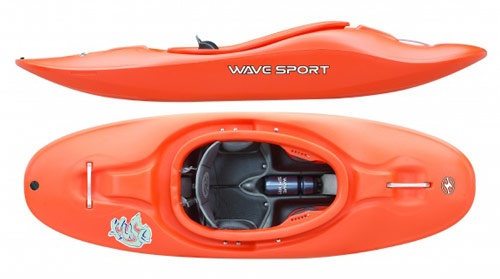Introduction
The design of the autonomous kayaks used by HoverGroup is motivated by our research goals and interests. Briefly summarized, our research aims to provide design and analysis tools for the operation of multiple autonomous vehicles where acoustic communications play a crucial role. There are currently few such tools available that can be applied to acoustic communication where bandwidth is extremely limited and packet losses can be both high and hard to predict or model. Focusing on shallow water or harbor environments, we seek to craft principled solutions that can be tested in the field using real hardware and then evaluated based on their performance.
Of course actual AUVs are expensive to own and difficult to operate, even individually. For this reason we use surface vehicles towing an acoustic modem in place of an AUV. This allows us to easily perform experiments with multiple vehicles while still using actual acoustic communications. The availability of RF communications and GPS based navigation make deployments easier and safer, while these same features can be disabled or ignored to simulate the conditions under which an AUV would operate.
There are several commercially available surface vehicles, such as the Kingfisher by Clearpath Robotics or the SCOUT kayaks made at MIT, but none of the products we explored provided the combination of options we sought. We opted to design and construct our own kayaks instead. This document will discuss the design requirements set by our experiments, the design of the vehicle itself, and field performance. Several iterations were required to reach the current state of the vehicle, and we will not spend much time discussing earlier designs here.
Design Requirements
First and foremost the vehicle must be able to tow an acoustic transducer at a depth of at least three meters. We use the 25kHz WHOI MicroModem as it is recognized as a competitive and up to date progress and our group has close ties with WHOI. The transducer is attached to a heavy towfish that weights down the towing cable and ensures the transducer hangs properly in the water. Speed is also important as the separation between vehicles can often be large and time on the water is limited. We've found that cruising around 2m/s provides a decent compromise between speed and endurance. We also wanted the vehicle to be capable of handling rougher sea conditions such as those found in open harbors.
Our target battery life was on the order of four hours, or a half day's operation. Ideally the batteries should be removable so they can be swapped out quickly when needed and be of a safe chemistry that can charge overnight. We also sought to keep the vehicle's two-man portable and small enough to fit in a rented SUV or uhaul. Operations can be a lot more flexible if neither a truck nor a hoist is required to transport and launch the vehicles.
Finally, we want to keep costs down where possible, but above that keep the vehicles easy to build and maintain. This means using as many COTS parts as possible. If a design element can be simplified or made more reliable by opting for a more expensive part, we will generally do so.
Design
Hull and Locomotion
The hull of the vehicle is a Fuse 35 kayak from WaveSport. This is a kid's whitewater kayak, giving it a distinctly different size and shape from the more traditional kayak hull used by others such as the SCOUT. The bottom of the hull is almost completely flat and slopes upwards towards either end. It is wider as well, giving it a decent interior volume despite being just 1.8 meters long. The greater volume to length ratio and hopefully increased stability of a wider hull led us to choose a whitewater kayak over a traditional design.
Thrust is provided by a Minn Kota Riptide series trolling motor rated for 50 lbs of thrust at 12 volts. Several smaller thrusters were tried and did not provide sufficient thrust when towing a modem. Traditionally the thruster is mounted in the stern of the vehicle, but for several reasons we opted to mount the thruster near the bow of the vehicle and mount a skeg astern of it. The flat bottomed hull means that the kayak does not track straight on its own, so a rear mounted thruster would probably make the vehicle very difficult to control and drive in a straight line. The kayaks are also expected to station keep frequently and a bow mounted thruster should provide greater maneuverability and accuracy when doing so. Finally, a bow mounted thruster means the modem can be hung astern of the thruster and the vehicle driven forwards without risk of the propeller hitting the cable.
